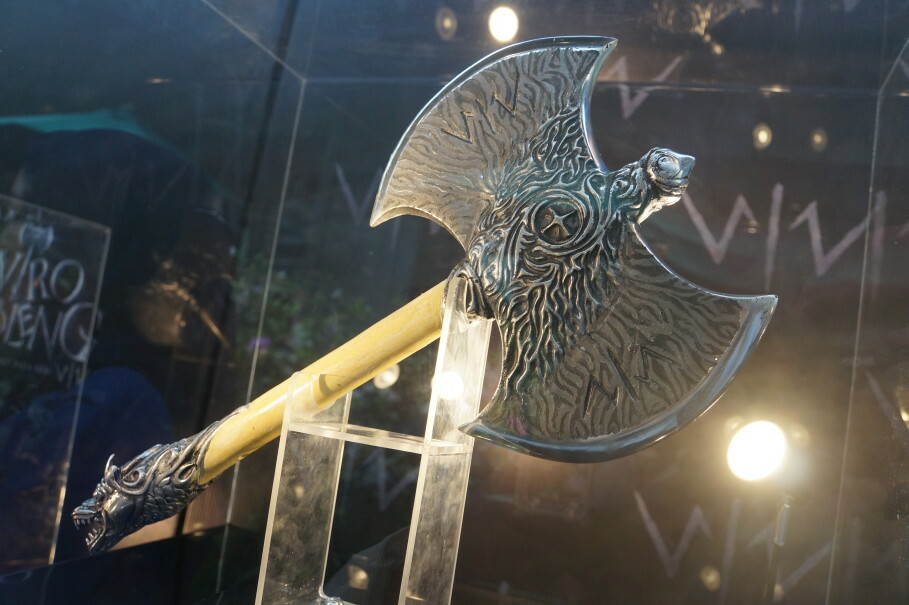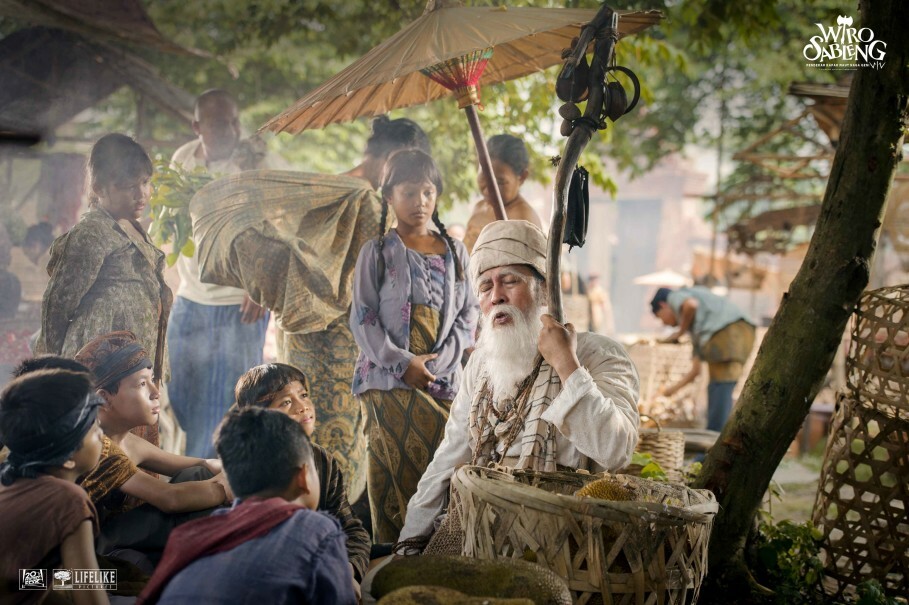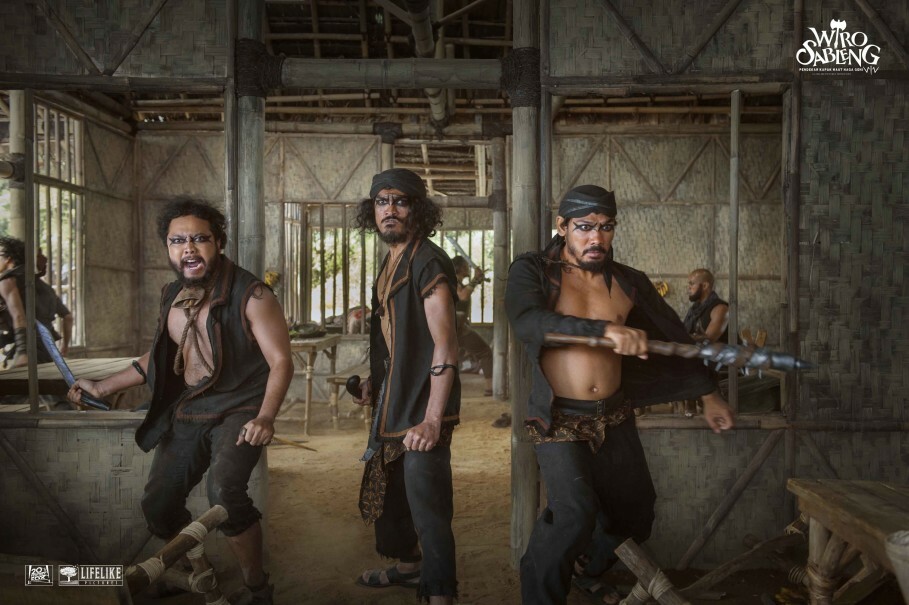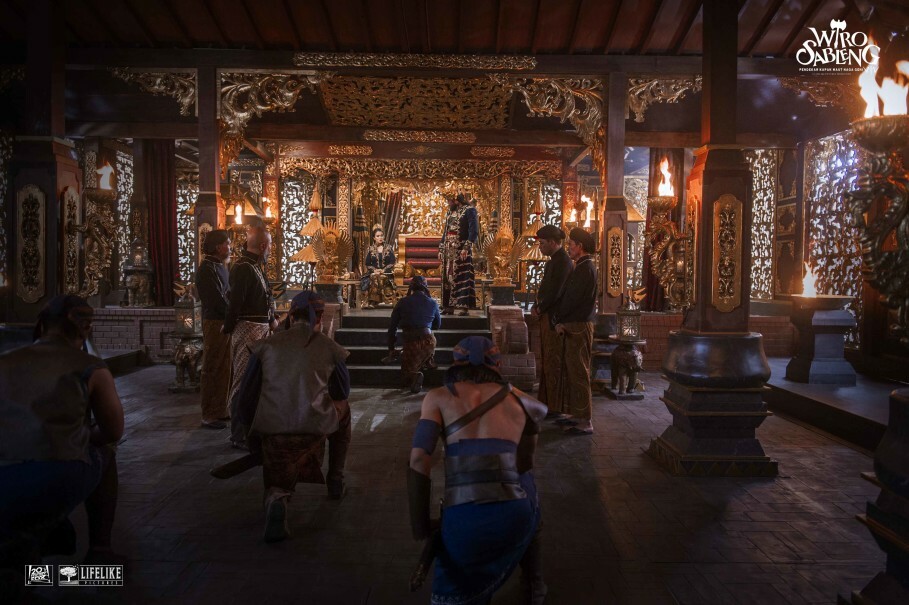Wiro Sableng's Pan-Indonesian Universe

Jakarta. When the Hollywood mega blockbuster "Black Panther" was released earlier this year, it launched a wave of Pan-African pride sparked by, among others, the different elements of African cultures converging into its wardrobe and set design. The characters in the film's fictional kingdom of Wakanda even ride rhinos instead of horses. The upcoming "Wiro Sableng: Pendekar Kapak Maut Naga Geni 212," or "212 Warrior: The Adventures of Wiro Sableng," a local blockbuster adaptation of Bastian Tito's famous dime novel series, is trying to achieve the same effect using Indonesian cultures – though with a much less political bent.
Production designer Adrianto Sinaga told the Jakarta Globe last week his aim was to create an authentic Indonesian feel for Wiro Sableng.
"You'll see the rich influences of Indonesian traditions and cultures. No one will mistake this for a film from Hong Kong, China, Japan or Korea. The costumes, props, sets – all are one hundred percent Indonesian," he said.
Adrianto designed a total of 300 original costumes and 150 weapons for Wiro Sableng.
All of them were made by a team from Caravan Studios, helmed by Chris Lie, including some that required digital effects.
One exception was a 10-kilogram dress made by Tex Saverio – who once designed a dress for Lady Gaga – for a character called the Eastern Wind Goddess (Marsha Timothy).
Javanese batik parang patterns are worn by the royal family in the movie. Wiro’s mother Suci (Happy Salma) also wears a Javanese kebaya, but there are many costumes in Wiro Sableng that show influences from other Indonesian cultures, down to the details.
Adrianto dressed Wiro Sableng (Vino G. Bastian) himself in a form-fitting, less Karate-like white robe. It has asymmetrical cutting to make it look more modern to suit the axe-wielding warrior's "sableng" (mad) personality.
His "Kapak Naga Geni 212" (Fire Dragon Axe 212) has a dragon head on the end of its handle that looks remarkably like the the mythical eagle Jatayu from the Ramayana epic. The sacred number 212 – in an ancient-looking custom font that makes it look like the letter W – is carved on the blade that has been cast with megamendung batik patterns from Cirebon, West Java.
If you look closer into the patterns, you'll see representations of the four earth elements: earth, water, fire and air.
Ulos, a traditional fabric from North Sumatra, is used to accentuate Anggini’s (Sherina Munaf) maroon blouse. Adrianto said he bought the ulos online, but there was only one piece with the exact pattern and colors that he wanted.
He decided not to reproduce the ulos since there would be too much risk of getting the wrong shade of color that will look terrible on camera, so the single ulos was cut into smaller pieces and used as accents on the costume.
Anggini’s teacher, Dewa Tuak (Drunken God, played by Andi /rif), has a necklace inspired by neck pieces worn by warriors from the island of Nias in North Sumatra.
Some modifications had to be made to the original looks featured in Bastian's novels. For example, Kakek Segala Tahu (Know-It-All Gramp) in the books wears a caping, a farmer's conical hat.
But since the hat is too common in Southeast Asia, Adrianto thought of a more Indonesian alternative: a turban inspired by Banten's Baduy tribe’s head cloth.
Perhaps the most "Indonesian" piece of clothing in the movie is Pirate Bagaspati’s (Cecep Arif Rahman) red-and-white t-shirt.
The "Where's Waldo?" top is actually a traditional short-sleeved cotton jersey from Madura, East Java, called sakera.
Meanwhile, the Empat Brewok (Four Bearded Men, characters that appeared in the first Wiro Sableng novel back in 1967) wear costumes inspired by warok (male dancer) in Reog performances in Ponorogo, East Java.
King Kamandaka's (Dwi Sasono) gilded costume meanwhile is inspired by the traditional wayang orang costume worn by Prabu Siliwangi from the Hindu Sunda Kingdom.
Princess Rara Murni (Aghniny Haque) wears a brown outfit accentuated with songket (traditional weave) and carries a weapon that looks like a mandau, the traditional dagger used by Dayak tribesmen in Kalimantan.
"A mandau’s handle is originally made of wood, but we used aluminium in the film," Adrianto said.
The Indonesian influence is felt right down to the fighting scenes, since the choreography is heavily influenced by moves from pencak silat, the traditional Indonesian martial arts and a debut event in the 2018 Asian Games in Jakarta and Palembang where Indonesia made a clean sweep of the gold medals.
The Raid legend Yayan Ruhian is the action choreographer for Wiro Sableng. He also plays Wiro’s nemesis Mahesa Birawa. Yayan told the Jakarta Globe he didn't stick to one style of pencak silat, but combined moves from three different schools: Ciung Wanara, Panglipur and Pencak Silat Tenaga Dasar.
"They're West Java styles of pencak silat, but I also used a bit of West Sumatran styles. I tried to find moves that hopefully match the jurus [moves] Bastian Tito created in the novels," Yayan said.
A Touch of History
Although the film's story is set in fantasy land, the creators did take some inspirations from real life sixteenth century Indonesia. The architecture of the palace, for example, is Cirebon’s Keraton Kasepuhan-meets-reimagined-Majapahit.
"The interior of the palace is more or less like the Keraton [Kasepuhan] but with some Majapahit influences. You won’t see the whole layout in the movie, just the throne and the front yard, but that's the big concept," Adrianto said.
The sixteenth century setting was not a random choice by the film's creators. Producer Lala Timothy said the Wiro Sableng books cover many eras, but they had to choose one period for the film.
Since in the books there are some storylines where Wiro clashes with European warriors, the sixteenth century seemed a good choice, since that was when the "spice route" that attracted Europeans to the Nusantara archipelago began.
That was also the time when there were major political shifts in the Nusantara kingdoms, marked by the rise to power of the Islamic Kingdom of Demak and the Hindu Sunda Kingdom’s momentous decision to move its capital to Bogor.
The historical background allowed the producers to fit in a similar plot.
"The kingdoms fought each other for domination. In this fantasy story, we have a dark and a light side. The dark side wants power at all cost, and the light side steps in when the dark side starts killing innocent people," Sheila said.
Indonesian Marvel
With 20th Century Fox on board, overseas screenings are pretty much guaranteed for the Pan-Indonesian Wiro Sableng film.
Many local horror and action movies, such as "Pengabdi Setan" ("Satan's Slaves"), "Jailangkung" and "The Raid," have been screened in neighboring countries like Malaysia and Singapore, but other than for these crowd pleasers, festivals are the go-to overseas outlet for Indonesian movies.
Given its Pan-Indonesian-ness and local historical setting, will Wiro Sableng appeal to audiences abroad?
Sheila expressed her optimism because she thinks the film has a universal story.
"It's the typical coming-of-age story. Wiro finishes his training and embarks on his journey to become a warrior. It's just like a young man entering the real world for the first time, getting his first job after university," she said.
20th Century Fox International Asia Pacific executive vice president Kurt Rieder told the Jakarta Globe on Monday that Indonesian audiences are their number one priority.
"What we’re doing now – and this is our new policy – in each country [we will] concentrate first on the domestic market and then anything we do international is extra. That's why it was Sheila who really drove the final product. She drove the script, the comedy. We didn’t want to un-Indonesia anything because we didn’t want to sacrifice the home market," he said.
After seeing the final cut of the film, Rieder was confident it would do well in overseas markets like Malaysia and Singapore.
"And we feel we can even cross over to Chinese audiences, since pencak silat moves are so similar to kung fu," he said.
Fox is also doing negotiations to make Wiro Sableng available on streaming (over the top, or OTT) platforms.
Like Sheila, Rieder believes Wiro Sableng has a universal story that can appeal to everyone.
"It's a superhero movie. An origin story. Marvel has its own universe. This is the Indonesia universe," he said.
Wiro Sableng: Pendekar Kapak Maut Naga Geni 212 hits Indonesian cinemas on Thursday (30/08), Malaysia in September and Singapore in October.
Tags: Keywords:POPULAR READS
President Jokowi Urges Global Restraint as Tensions Rise in the Middle East
President Joko "Jokowi" Widodo emphasized the importance of diplomatic efforts to prevent the escalation of conflict in the Middle EastKPK Identifies Sidoarjo Regent as Suspect in Corruption Probe
KPK has identified Ahmad Muhdlor Ali as a suspect in a corruption case involving the Sidoarjo Regional Tax Service AgencyEconomic Concerns Overshadow Security Worries for Indonesians in Iran
Indonesian citizens currently in Iran are more concerned about rising inflation than the security situation in the country.'Siksa Kubur' Review: Indonesian Horror with Solid First Act
The beginning part of "Siksa Kubur" is incredibly solid across many fields, including the visual storytelling.IDX Slides 2 Percent as Geopolitical Conflict Rattles Market Confidence
The IDX attributed the subdued performance of the index at the start of the week to the escalating geopolitical tensions in the Middle EastPopular Tag
Most Popular
































